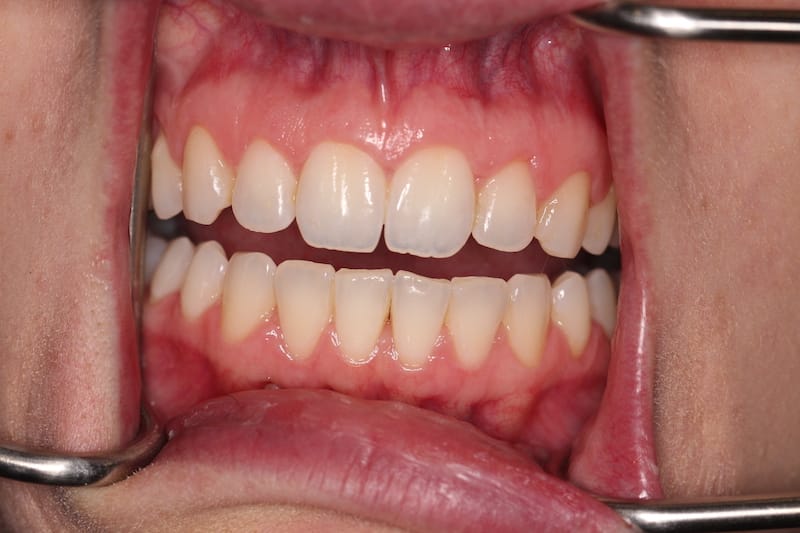

An incisal gap can occur if youre not wearing your aligners enough. The Invisalign treatment Windsor, Ontario really trusts comes from a reliable family dentist. When a gap forms between the Invisalign trays and your teeth, this is called an incisal gap. Small gaps may take as little as six months. Invisalign is recommended for gaps up to 6 millimeters, which take about 24 months to correct. The exact treatment time varies based on the size of the gap. If your gap is the result of a missing tooth, you should ask your dentist about alternative options to replace the absent tooth and improve the alignment of surrounding teeth that way. Invisalign spacers are very helpful for correcting small gaps in teeth, but may not always completely resolve large gaps. Closing gap front teeth with the Invisalign system is trendy due to the metal-free aesthetics of our clear aligners. If the gap is minor, you may find that cosmetic solutions like veneers or. How Long Does Invisalign Take to Correct a Tooth Gap? During your initial consultation, we will determine if you qualify for Invisalign. Almost all crooked teeth respond to Invisalign very well. It takes about 12 months of treatment for the average patient to straighten crowded teeth, whether on the top or bottom dental arch. It is an effective, pain-free, and fast solution. Invisalign is great at correcting crowded teeth. How Long Does Invisalign Take to Correct Crowded Teeth? Let’s take a closer look at some common questions:

However, almost anyone can have excellent results by using Invisalign as directed and visiting the dentist regularly. Younger patients generally see results a little sooner than adults, and those with more severe conditions take longer than patients with minor misalignment. In general, it takes about 12 to 18 months for final results to be apparent in the mirror.

Every day you wear your spacers, subtle changes are happening in the position of teeth. The time it takes for Invisalign to help with any given condition can vary. Over time, Invisalign can correct most cases of crowded teeth or gaps between teeth. Like braces, Invisalign spacers exert gentle pressure on the teeth to move them into a healthier alignment. They’re also convenient, letting you remove them any time for easy cleaning. People prefer Invisalign because they are so subtle, your dentist may be the only person who knows you have them. Only patients with the most severe orthodontic problems don’t qualify! It can be effective for most patients of any age who can commit to wearing the clear plastic spacers for at least 22 hours every day. Gaps Between Teeth - People with wider gaps between their teeth are also more prone to gum disease as food can get stuck in the gaps and bacteria can accumulate.Invisalign is a popular alternative to old-fashioned wire braces that’s enjoyed by adults and teens alike. People with crowded teeth are more susceptible to developing gum disease as it's more difficult to perform thorough oral hygiene. Crowded Teeth - Teeth get crowded when there is not enough space in the mouth and the teeth start overlapping or twisting to fit on the jaw. Invisalign is often recommended for crossbites. This can lead to chipping and wear of the teeth and even receding gums. Crossbite - A crossbite occurs when the upper teeth are on the inside of the lower teeth, instead of on the outside as normal. This can be fixed by moving the teeth into place with Invisalign. Open bite - An open bite is when the upper teeth don't meet the lower teeth at all when you bite.

Invisalign can also help move the teeth to their natural placement. Overbite - An overbite is just a reverse underbite, and occurs when the upper teeth are too far forward of the lower teeth when biting. With Invisalign, the bottom teeth can move back into place. Underbite - An underbite occurs when the bottom teeth are in front of the top teeth while biting. Here are some of the problems you can solve with Invisalign: Crooked teeth - If you want a straighter, more charming smile this is the perfect solution. Invisalign has taken braces to another level of convenience and usefulness by being removable, transparent, and easy to use.


 0 kommentar(er)
0 kommentar(er)
